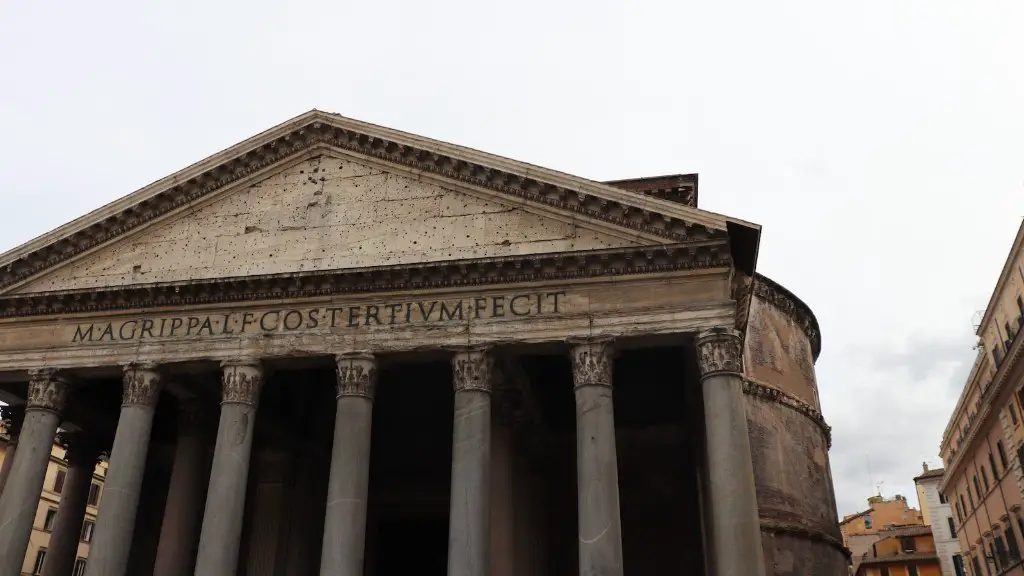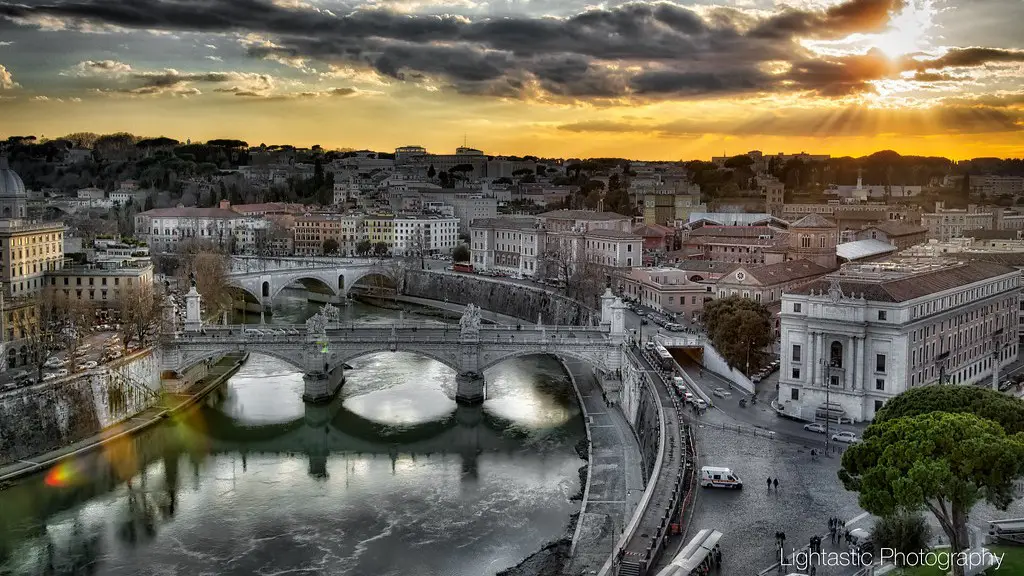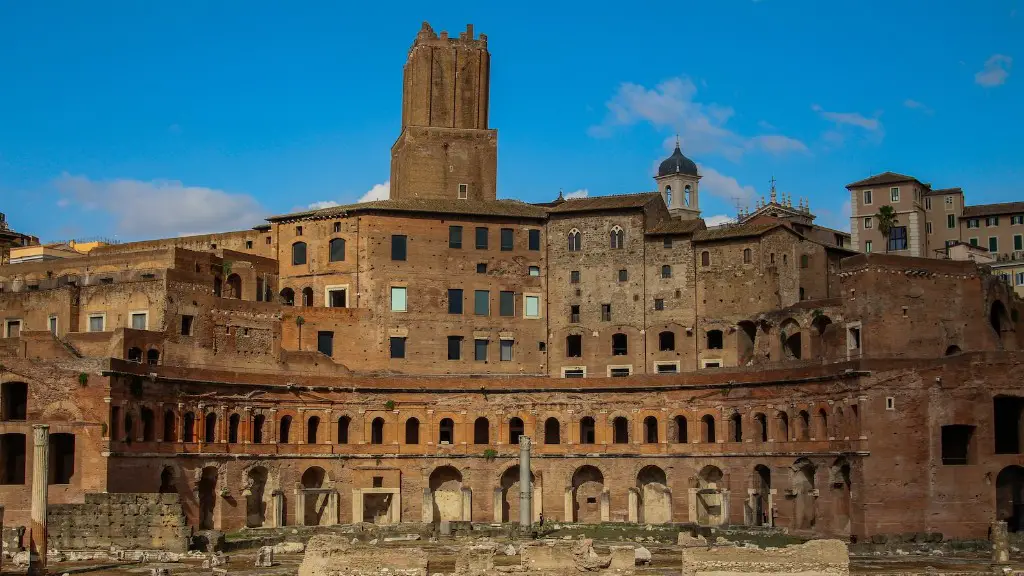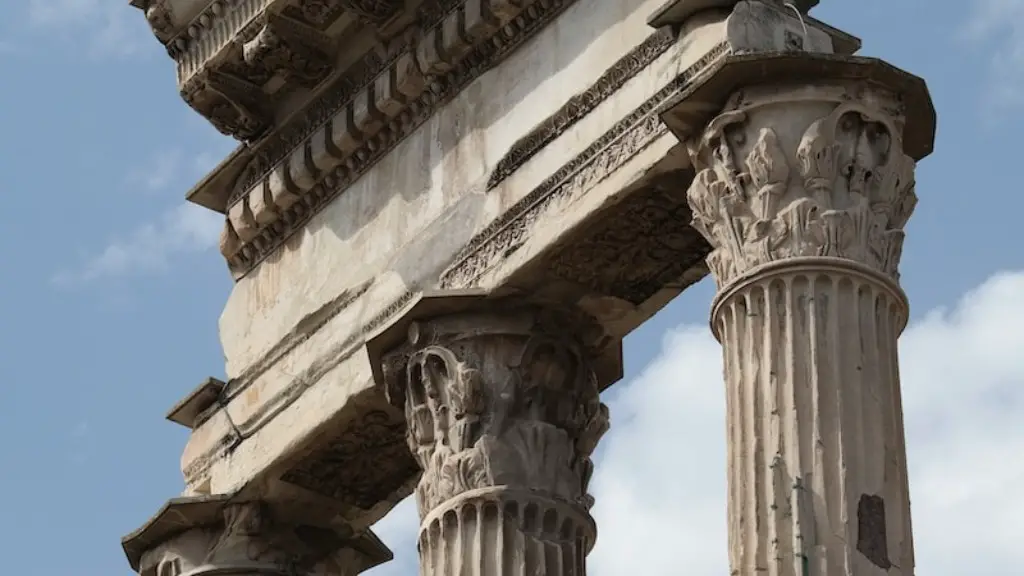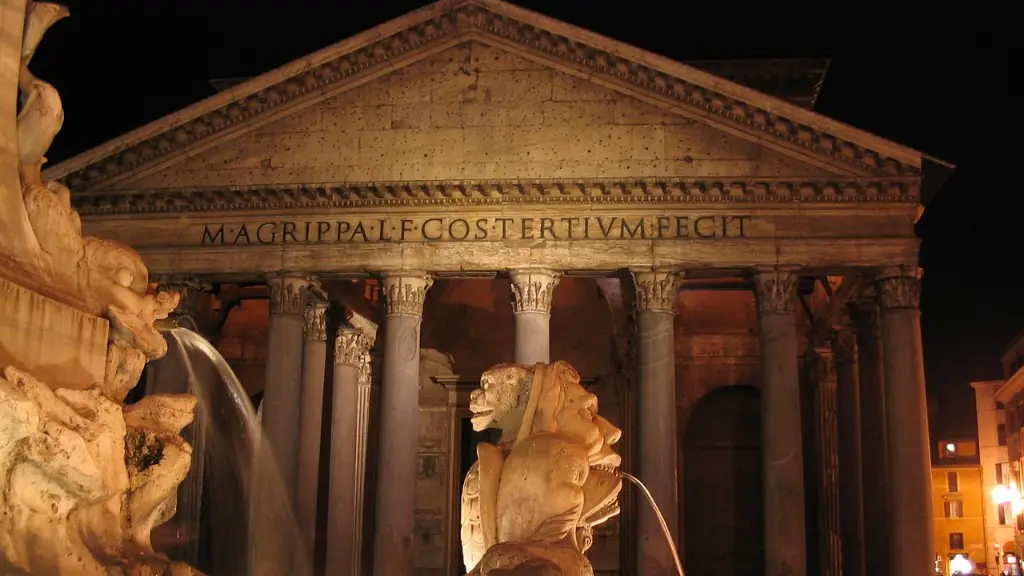Overview of Employment in Ancient Rome
Rome was a great empire with a rich and diversified labour force. During the ancient Roman days, there were many different kinds of jobs available, ranging from the very simple, such as servant, to the far more complex and skilled positions, such as those of a physician or a lawyer. In this article, we will look at the different kinds of jobs that were available in ancient Rome, as well as discuss their importance in the Roman economy and society as a whole.
Several of the most important and influential professions in the Roman Empire were in the realm of public service and diplomacy. These positions would have included governors, legal advisors and court officials, generals and military strategists, ambassadors, administrators and civil servants. Many of these figures were instrumental in ensuring the maintenance of Rome’s great empire. They had to possess a profound understanding of both the practical and theoretical aspects of their respective abilities in order to maintain order.
The engineers, architects, mathematicians and scientists of the Roman Empire were essential in developing and advancing the buildings, roads and works of the Roman world. These people were responsible for maintaining these works, as well as creating new ones, by creating plans and then carrying out the various aspects of the work, from the quarrying of stone to the measurements and surveying of land for the building of cities.
The Roman Empire was also dependant upon the military to protect its borders and ensure its stability. The soldiers of the Legion served as the backbone of the Roman Army. They were highly trained, competent and dedicated to their task. The Legion was a disciplined and organized force which was widely feared and respected by enemies and allies alike.
However, not all jobs in Rome were important positions in the political and military arenas. For example, many skilled craftsmen such as masons and blacksmiths were employed in order to build and maintain the structures of Rome. Additionally, there were bakers, fishermen, farmers and various professionals involved in the production and sale of goods such as cloth and wool. These jobs were not only necessary for practical reasons but were also essential for the growth and stability of the Roman economy.
Moreover, workers were also employed in the entertainment industry such as actors and musicians. These individuals, who could provide entertaining performances for the Roman masses, were in high demand and could charge high prices for their services. Additionally, literature and art were popular forms of entertainment and were also highly sought after.
However, many of the jobs which were available in ancient Rome were far from glamorous and often involved back-breaking labor in the hot sun. Slaves, working off their debts and prison sentences, worked many of the more laborious and menial positions. Other low-pay occupations such as servants and launderers were also expected to work long hours for almost no pay.
Overall, the range of jobs that were available in ancient Rome highlighted the fact that the Roman Empire was an incredibly complex and diversified society. The jobs that were present in the Roman world provided a necessary variety of skills and talents in order to maintain and expand the great Roman Empire.
The Educational System in Ancient Rome
Education was an important part of daily life in Ancient Rome. The educated classes of upper class Roman children were taught and trained to become competent politicians, lawyers, statesmen and merchants. They had to learn Latin, rhetoric and logical argumentation in order to hold public office and pursue a career in law. In the wealthy households of the Roman nobility children had access to private tutors and mentors.
In addition to the education provided to upper class families, other forms of educational institutions existed in Rome as well. Some of these were state-supported, such as the schools in Forum Romanum and the schools of rhetoric. These schools often had a focus on teaching specific skills, such as rhetoric and logical argumentation, which were needed for political life and public office in the Roman Republic.
On the other hand, some of the lower classes, such as those who were not of the aristocracy or the wealthy, did not have access to the same type of education. These people often had to attend informal schools, or rely on their parents and the local community, to receive ad-hoc teaching and instruction. Additionally, there were also organizations such as religious cults, who also provided education.
Nevertheless, education in Ancient Rome was not a privilege reserved only for the upper classes. In fact, many of the trades and jobs that were common in Ancient Rome specifically required an educated workforce. Knowledge of language, philosophy, engineering and mathematics were all highly prized skills that had to be learnt in order to succeed in some of the most important ventures of the Roman Empire.
Overall, the educational system in Ancient Rome was quite diverse and complex. From the upper classes to the lower, education was highly valued and was often seen as an essential part of the city’s culture and life.
Family Life in Ancient Rome
Family life in Ancient Rome was a complex mix of traditional values and progressive beliefs. Families were seen as the essential building blocks of society and were highly prized. Families were expected to be tightly knit and kept their values, traditions and beliefs intact.
Fathers were expected to be the head of the family. They had legal control over the lives of their children and their marriage. Fathers also had to protect their family and ensure that their children were well provided for. However, it was not uncommon for mothers to also contribute to the family income, usually as seamstresses or farmers.
The disintegration of families was frowned upon and Roman law specifically discouraged it. Divorce was discouraged and even considered a last resort, while abandonment and remarriage were also discouraged. As such, families in Ancient Rome were expected to stay together and to remain loyal to each other.
In addition to the importance of family within Roman society, the state also exerted a significant amount of influence over the lives of its citizens. In particular, the state had the power to impose military conscription for able-bodied young men and even subject them to taxation. This could put a great strain on a family, as citizens were expected to pay large sums of money in taxes to the state.
The roles and responsibilities of women in Ancient Rome were also quite different from that of men. Women were expected to stay in the home, to keep the household running smoothly and to bear and raise children. Women could not own property or make decisions for themselves. These roles were seen as one of the primary roles of a woman in Ancient Rome.
Overall, family life in Ancient Rome was quite complex. Families were expected to remain close knit and loyal to each other. Additionally, the state also had a heavy influence over the lives of citizens, including the role of women. Nevertheless, families were seen as the building blocks of society and were highly valued.
Impact of Ancient Rome on Modern Day Culture
The legacy of Ancient Rome on modern day culture is immense. From its political structures, architecture, literature and art, Ancient Rome’s influence has been deeply entrenched in western society. Its influence can be seen in many aspects of our lives, from the way we govern ourselves to the way we think and process information.
The political system in Ancient Rome has been an important influence on democracy today. Its form of government, which was based on the rule of the people and which gave the people the power to elect their leaders and pass laws, is the foundation of democracy in much of the world today.
The architecture of Ancient Rome is still present in many cities today. Many cities, from New York to Rome itself, have adopted the classic Roman styles of architecture. This can be seen in the industrial and square designs of many of the older buildings as well as in newer buildings, which often adopt more modern interpretations of the classic style.
Additionally, the literature of Ancient Rome has also had a profound impact. Many of the works of the great Roman authors, such as Virgil and Cicero, are still widely read today and are studied in schools and universities around the world. The literature of Ancient Rome has provided inspiration and insight into the way we think and perceive the world today.
Moreover, art and literature of the time have also had a lasting impact on our culture. From the origins of classical music to the realism of sculpture, Ancient Rome has provided inspiration and set a standard for art and design that is still prevalent in our culture today.
Finally, Ancient Rome’s language has also remained largely intact and has had a lasting influence on other languages, such as French and Spanish. Latin, Latinized and Latin-style words have continued to be used in many languages and forms of communication today.
Overall, the impact of Ancient Rome on modern day culture has been immense. From its political structures, to its architecture and literature, and even its language, the influence of Ancient Rome can be seen in many aspects of our lives.
Social Life in Ancient Rome
Social life in Ancient Rome was quite exciting and dynamic. There were many different types of activities that people could participate in, from competitions and sports to dining and theatre. These activities often involved large groups of people and were often quite elaborate.
One of the most important aspects of social life in Ancient Rome was the theatre. Theatre was a very popular activity and there were many plays, comedies, tragedies and other forms of entertainment which were presented in the Colosseum and other venues. Performers were often highly respected and even those who were not of the aristocracy or wealthy class, could pursue a career in the theatre.
Additionally, there were also many competitions and games which were popular in Ancient Rome. Sports, such as chariot races and gladiatorial combat, were highly popular activities and often drew large crowds. There were also other types of competitions such as races, boxing matches and music competitions.
Besides competitions, there were also many activities that were just for the fun of it. Dining clubs were popular, where members would gather to discuss and debate topics and exchange ideas. Music and dancing were also popular forms of entertainment. Additionally, the circus or hippodrome were also venues which were used to provide entertainment.
Overall, social life in Ancient Rome was filled with many different types of activities and interests. From theatre to sports, to dining and music, there were many ways in which people could be entertained and enjoy their time.
Conclusion
Ancient Rome was a great and powerful empire, with a diverse and highly advanced society. There were many jobs available in Ancient Rome, ranging from the political and military to the skilled professions, such as engineers and architects. Additionally, the educational system was quite complex and diverse, with an emphasis on knowledge and skill. Family life in Ancient Rome was also highly valued and fathers were expected to provide for the family. Finally, Ancient Rome has had a lasting influence on modern day culture, from its political system to its art and literature.

